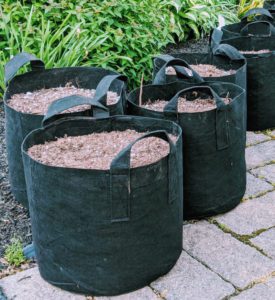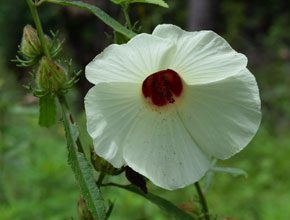
Sweet potato slips
This is one of my favorite times of the year! Seed Catalog time. Don’t you just drool at the pictures of fat, juicy tomatoes, pages of colorful zinnias and the burst of orange from the best butterfly magnet ever, the fabulous Tithonia?!
I’m trying something new this year. I had pretty much decided several years ago to leave the vegetable growing to our local vendors at the Farmers’ Market and concentrate my efforts on flowers – a decision that suited everyone.
Being housebound while recovering from a stroke last fall, I had a lot of time to read and some of my most interesting reads were about how more and more of American households are turning to growing a small, balcony-sized garden and even larger ones in containers. The containers are changing, too.
In fact, one grower experimented growing potatoes in five different containers and he discovered that the most productive one was a cardboard box!
Heaven knows most of us have plenty of those from our online shopping (thank you, Jeff Bezos), but since my gardening this year will be confined to my very visible front porch, I don’t want my neighbors to think they’re living next to Tobacco Road.
So I opted for grow bags. They come in flexible and breathable plastic cloth, in sizes from one gallon to twenty gallon, with carry handles on each side. I like that they’re lightweight so they can easily be moved to follow the sun, if needed. Because they are not organic, they don’t rot so you can use them for years.
I ordered five gallon and ten gallon ones. I also ordered sweet potato slips (plantlets with roots which are grown from the tuber itself) since I wanted some exotic ones, although you can grow your own slips from grocery store sweet potatoes.
Let me explain. Regular potatoes such as red, Yukon Gold and other potatoes which you can buy at your supermarket are all

Grow bags
in the family Solanum tuberosum and can be planted whole or in pieces directly in soil. Not recommended for sweet potatoes.
Sweet potatoes are a whole ‘nother family: a vining plant in the same family as morning glories; Ipomoea. Who knew? And yams are in yet another family – Dioscorea. You can tell them apart easily since sweet potatoes have pointy ends and yams have rounded ends. However, they have similar taste and are used in cooking almost interchangeably.
Sweet potatoes have flesh and skin in white, red, orange and purple. And they can vary somewhat in taste and texture. Like ‘regular’ potatoes, they are often eaten along with their skins.
But back to the slips I ordered. I had read about a fabulous tasting, purple fleshed one called “Okinawa.” Sometimes, but rarely, you can find a named variety in your market. Usually, though, if you want them, you’ll have to grow them yourself. Then, too, you can grow your own slips the following year. One tuber can grow many slips.
I really didn’t know what to expect, but I was pleasantly surprised to receive well-rooted, vining slips that were 8 inches long with several large leaves.
It was too early to plant them outside, so I temporarily potted them up in soil filled plastic glasses and put them on the windowsill where they will live until I can put them outside in grow pots. About now.
I’ll be sure to keep you posted on their progress and you’re all invited to come for dinner when they’re harvested.








